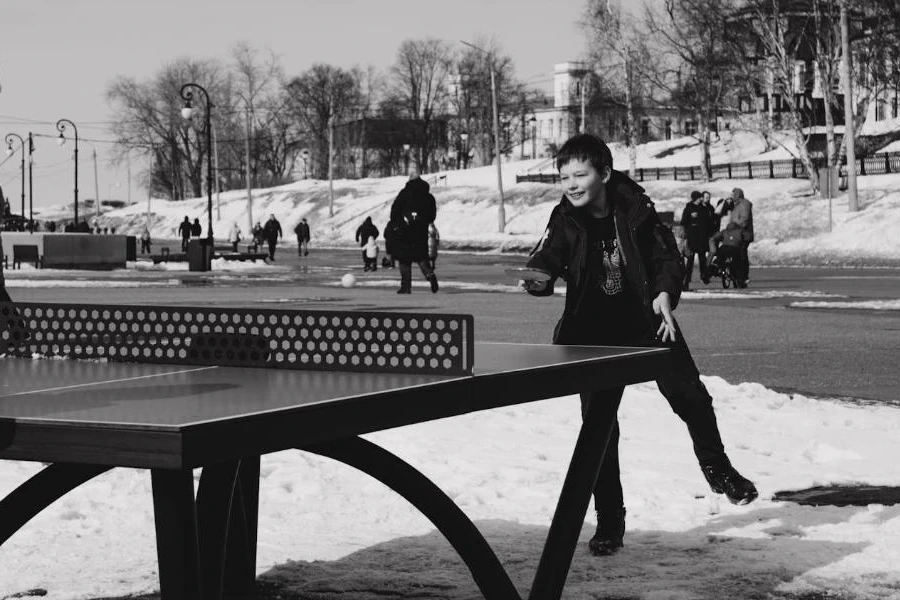Indoor recreation activities have become popular because people want something they can enjoy in the comfort of their homes in their game rooms or backyard. An example of this type of activity is owning a table tennis table, also known as ping pong. It is a racket sport derived from regular tennis; however, the difference is that players use a surface on top of a stationary table rather than a tennis court to play.
The game originated in Victorian England, where it was a parlor game played after dinner by the upper class. Later, the sport gained international recognition, and many people started to compete. Despite its competitive nature, it is a popular recreational activity.
Having the right skills to excel in table tennis competition is critical. Therefore, this article will provide fundamental skill techniques to shine during the next family fun match.
Table of Contents
The global market for table tennis tables
What are the 3 fundamental table tennis skills?
Conclusion
The global market for table tennis tables
The global market size of table tennis tables in 2022 was USD 485.3 million. The market has been growing at a compound annual growth rate (CAGR) of 2.1%; by 2023, it is expected to reach USD 598.11 million.
The market has been growing within the recreation and sports industry by catering to different consumers, such as casual players or professional athletes. The market has offered various types that meet user preferences and environments. The main distinction is indoor and outdoor tables, which each have different characteristics.
The latest trend is the intelligent table tennis table, driving market growth. Its differential feature from traditional tables is the technology that improves the gaming experience. Smart table tennis has score tracking, interactive coaching, and training programs. This trend appeals to consumers, especially recreational users, because of its technological shift.
What are the 3 fundamental table tennis skills?
Grip

The first step to developing table tennis skills is learning to hold a table tennis paddle, as this is the central piece that people use to hit the ball.
There are two ways to hold the paddle: shakehand and penholder grip.
A shakehand grip is similar to a handshake. People should hold the bat using three fingers: the middle finger, ring finger, and pinkie. Also, free the thumb and index finger. Place the index finger on the backside edge of the rubber and the thumb on the rubber or blade on the opposite side, forming a V shape.

Alternatively, the penholder grip is similar to holding a pen: Curl the thumb and index finger around the paddle edge to form a C-shape and relax/ease on one side of the rubber. Simultaneously, the other three fingers offer support on the other side of the rubber.
Footwork

Good footwork is crucial in table tennis. It gets people near the ball quickly and gives them ample time to execute a better stroke.
There are four types of footwork: in-and-out footwork, side-to-side footwork, crossover footwork, and one-step footwork.
In-and-out footwork occurs when faced with a short service from the opponent. Therefore, the body has to move closer to the ball and return to its original position after making the stroke. To have good in-and-out footwork, consider moving the left foot first and the right foot to follow and vice versa when returning to the original position.
Side-to-side footwork moves sideways, from backhand to forehand. The Sideways technique requires small and quick shuffles from side to side, which usually look like a quick jump.
Crossover footwork is appropriate when covering a larger area to return the ball. Side by side is a good technique for smaller areas, and crossover is for more expansive areas. For right-handed people, take a wide step using the left foot for a wider foot and position; simultaneously, place the right foot at a broader angle to act as a pivot.
For instance, a one-step footwork pattern is for right-handed people. The ball is a little further from the forehand, and the right foot is moved to the ball position. Concurrently, the body moves in a similar direction as the foot. In this technique, the left foot carries all the body weight and should remain stationary or can move slightly.
Serve

Serving is an important starting point; a good serve gives an immediate advantage. The serve technique requires a person to understand the holding techniques and basic table tennis strokes.
Serving is crucial because the person has total control over the game. There are two types of serving: forehand and backhand.
Every beginner should start with a forehand serve. First, grip the paddle accordingly; the forehand side should face the net. Toss the table tennis ball and strike, ensuring the first bounce is on the server’s side, and the ball drops on the opponent’s side. Additionally, consider keeping the bat at an angle so the ball bounces at a minimum height over the net.
The backhand serve is more complex, and people should practice after gaining confidence in the forehand serve. Backhand serve is the opposite of forehand serve. In this technique, use the backhand side to hit the ball, the reverse of the racket forehand side.
After mastering the two types of serving, you can learn more advanced techniques, such as understanding spinning and how to mix spinning while serving.
Conclusion
A good way of decompressing at home is crucial, especially after a stressful day. Owning a table tennis table can improve people’s way of life. Additionally, it helps people to gather and bond while having physical movement.
With the demand for table tennis increasing yearly, retailers should consider meeting consumers’ demand by stocking smart table tennis for indoor gaming.



